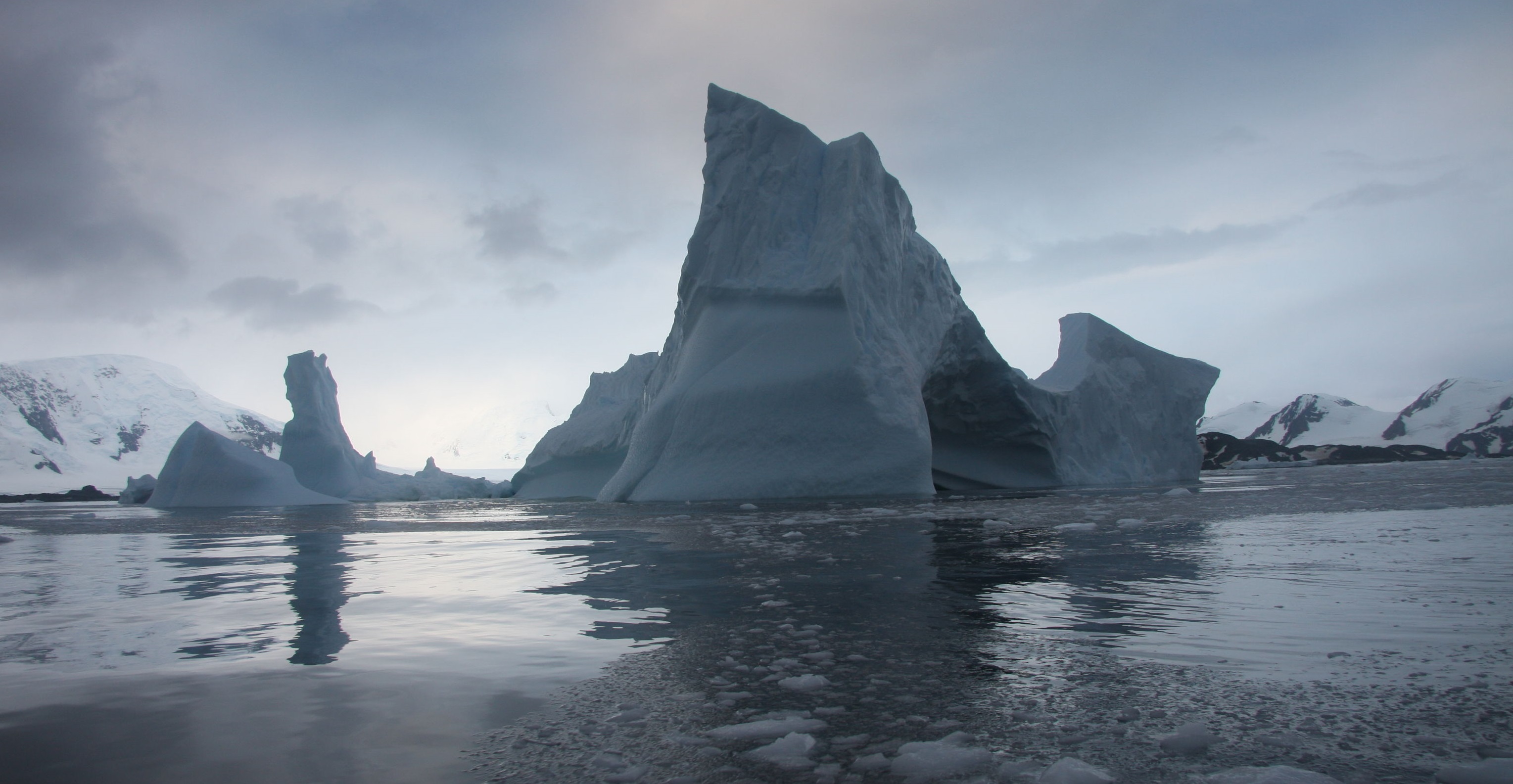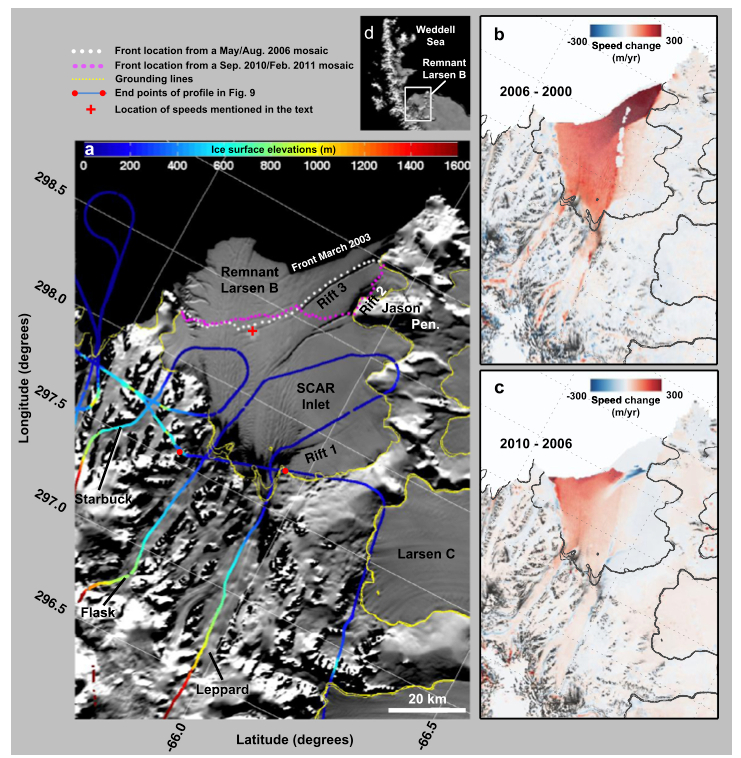Antarctic Ice Shelf in Last Throes of Collapse

A vast Antarctica ice shelf that partly collapsed in 2002 has only a few years left before it fully disappears, according to a new study.
Radar data reveals that the Larsen B ice shelf could shatter into hundreds of icebergs by 2020, researchers reported Thursday (March 14) in the journal Earth and Planetary Science Letters.
"It's really startling to see how something that existed on our planet for so long has disappeared so quickly," lead study author Ala Khazendar, a scientist at NASA's Jet Propulsion Laboratory in Pasadena, California, told Live Science. [Album: Stunning Photos of Antarctic Ice]
An ice shelf is like a floating ice plateau, fed by land-based glaciers. The Larsen B ice shelf existed for 12,000 years before it fell apart in 2002, separate studies showed. The ice shelf is on the Antarctica Peninsula, the strip of land that juts northward toward South America. Larsen B is about half the size of Rhode Island, some 625 square miles (1,600 square kilometers).
Because the ice shelf is already in the ocean, its breakup won't further boost sea level rise. But Khazendar and his co-authors also discovered that the glaciers feeding into Larsen B's remaining ice shelf have dramatically thinned since 2002.
"What matters is how much more ice the glaciers will dump into the ocean once this ice shelf is removed," Khazendar said. "Some of these glaciers are most likely already contributing to sea level rise because they are in the process of accelerating and thinning."
The Leppard and Flask glaciers thinned by 65 to 72 feet (20 to 22 meters) between 2002 and 2011, the new study reported. The fastest-moving part of Flask Glacier sped up by 36 percent, to a speed of 2,300 feet (700 m) a year.
Get the world’s most fascinating discoveries delivered straight to your inbox.
The glaciers that were behind the vanished section of the Larsen B ice shelf sped up by as much as 8 times their former rate after the ice crumbled over a six-week period in 2002, earlier studies showed.
The northwestern part of the Larsen B ice shelf is also becoming more fragmented, the researchers said. But the southeastern part is cracking up. A huge rift has appeared just 7.5 miles (12 km) from the grounding line, where the ice loses contact with the ground and starts floating on the ocean, the study reported. This crack marks where the ice shelf may start to break apart, the researchers said.
The Antarctica Peninsula is one of the world's fastest-warming places, with an average rise in air temperature of 5 degrees Fahrenheit (2.8 degrees Celsius) in the past 50 years, according to the British Antarctic Survey. This March, the northern tip of the peninsula set an unofficial heat record of slightly above 63 F (17 C).
Researchers think the surface warming is melting the ice shelves, triggering a cascade of events that eventually leads them to catastrophically collapse. But recent research also points to melting from below, from warmer ocean water.
Scientists are tracking the ongoing changes in the Antarctica Peninsula ice shelves because the collapse could indicate what may happen across the entire continent.
"This presents a large-scale natural experiment," Khazendar said. "Here we have an ice shelf in the process of fragmentation, so we can keep an eye on it and learn as much as we can about the process before it disintegrates and disappears."
Follow Becky Oskin @beckyoskin. Follow Live Science @livescience, Facebook & Google+. Originally published on Live Science.




